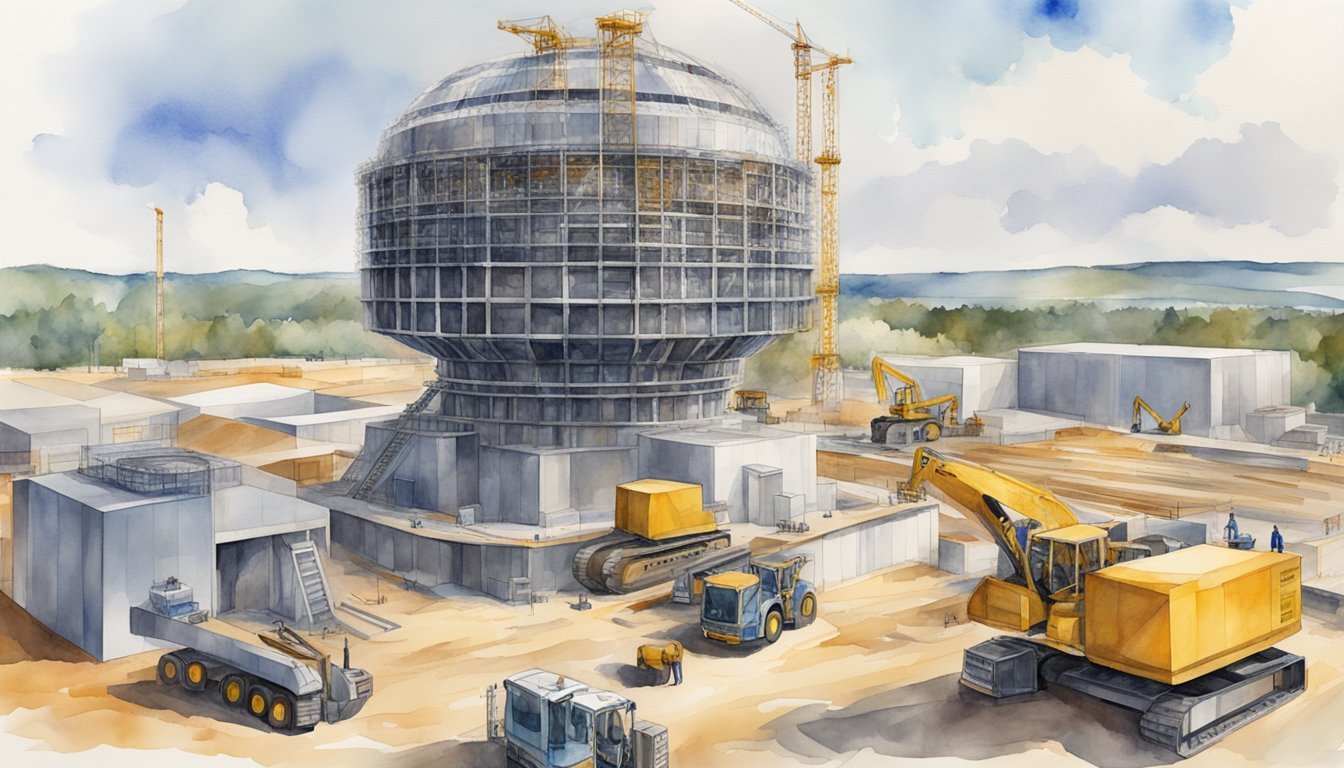Understanding ITER and Fusion Energy
ITER is a monumental engineering and scientific project that aims to demonstrate the practicality of fusion as an energy source. Utilizing the power process of the sun, ITER seeks to achieve sustained energy output through nuclear fusion, potentially revolutionizing energy production.
Principles of Fusion Energy
Fusion energy is produced when two light atomic nuclei, usually isotopes of hydrogen such as deuterium and tritium, merge at high temperatures and release energy—an event routinely occurring in stars, including our sun. This process differs from fission, where heavy atoms split apart. The challenge on Earth is to replicate this process in a controlled way to harness it for electricity production. The energy released from fusing these small amounts of fuel is immense and can exceed the energy input, characterized by a q value greater than one.
ITER Tokamak: The Machine
The ITER Tokamak is the main device of the ITER project, designed to contain the fusion reaction. A tokamak is a machine that uses magnetic confinement to hold plasma—a state of matter where charged particles are free-floating—in place long enough for fusion to occur. China, Japan, Russia, India, the United States, the European Union, and South Korea collaboratively build this largest tokamak with hopes of achieving a self-sustained burning plasma state, which is crucial for continuous fusion energy generation.
Key Components and Technologies
ITER’s core components are integral to its operation. Superconducting magnets, including the toroidal field magnets and the central solenoid, produce strong magnetic fields to confine and shape the plasma. The vacuum vessel, made of robust materials like niobium-tin, houses the plasma and acts as a safety barrier. ITER also uses cutting-edge cryogenics to cool the magnets, and an extensive heating system to heat the plasma to the necessary temperatures for fusion reactions to occur. Advanced technologies in remote handling and diagnostics are being developed, essential for the assembly, operation, and maintenance of this complex machine.
Challenges and Progress in ITER’s Development

The ITER project, striving to demonstrate the feasibility of fusion power, faces the intricate challenges of international coordination and cutting-edge technical hurdles while making significant strides in its development.
International Collaboration and Logistics
The International Thermonuclear Experimental Reactor (ITER) represents a monumental international endeavor, with member entities including countries and organizations like China, the European Union, and the US ITER from the Oak Ridge National Laboratory, among others. Managing logistics between these participants to ensure safe and timely construction remains a complex aspect. Notably, the assembly phase taking shape in Cadarache, France, benefits from the diverse expertise that each member brings to the project.
In recent times, the significance of ITER’s research plan has prompted deep cooperation among members, despite differing political climates, as evidenced by the consistent effort despite the Democratic People’s Republic of Korea’s absence from the consortium. This cooperation extends to overcoming difficulties related to schedule coordination, sharing of scientific research outcomes, and remote maintenance technologies critical for safe operation within the intense environment of a functioning nuclear fusion reactor.
Overcoming Technical and Financial Hurdles
Technical challenges for ITER are substantial, from mastering the control of magnetic fields within the tokamak to ensuring the reliability of the cryogenic plant and thermal shields. The financial aspect also carries its weight, with cost estimate adjustments being a regular part of the conversation, reflecting through the ITER Council’s focus on meeting the research plan within the revised budget constraints.
Innovation is clearly visible, from advances in the remote handling systems for tritium breeding to the installation of diagnostics and radio frequency waves for conducting fusion reaction experiments. Delays, often due to the complexity of fabricating first-of-a-kind components such as the cryostat and superconducting magnets, are systematically addressed, and recovery paths are identified. The U.S. Department of Energy and other domestic agencies play a vital role in this process, contributing to the shared goal of achieving a fusion power gain that will eventually pave the way for a carbon-free energy source.
From the standpoint of environmental impact and licensing, ITER has set high safety standards, aiming for an energy source that stands as a potential alternative to fossil fuels. The cooling water system and various other components are meticulously designed to ensure that no significant environmental hazards are posed. Through all these efforts, it is clear that members are dedicatedly working towards making ITER not just a scientific milestone but a reliable cornerstone for the power industry in the future.

